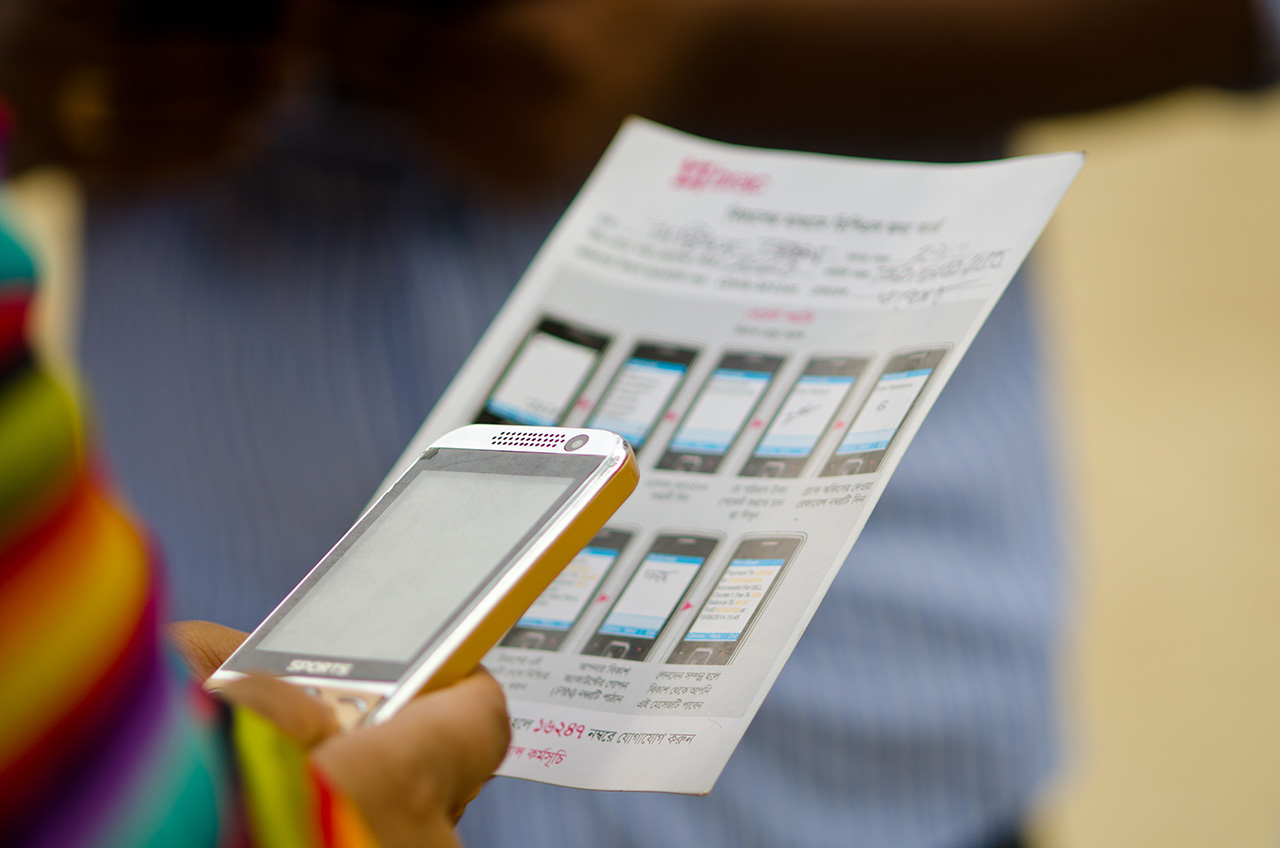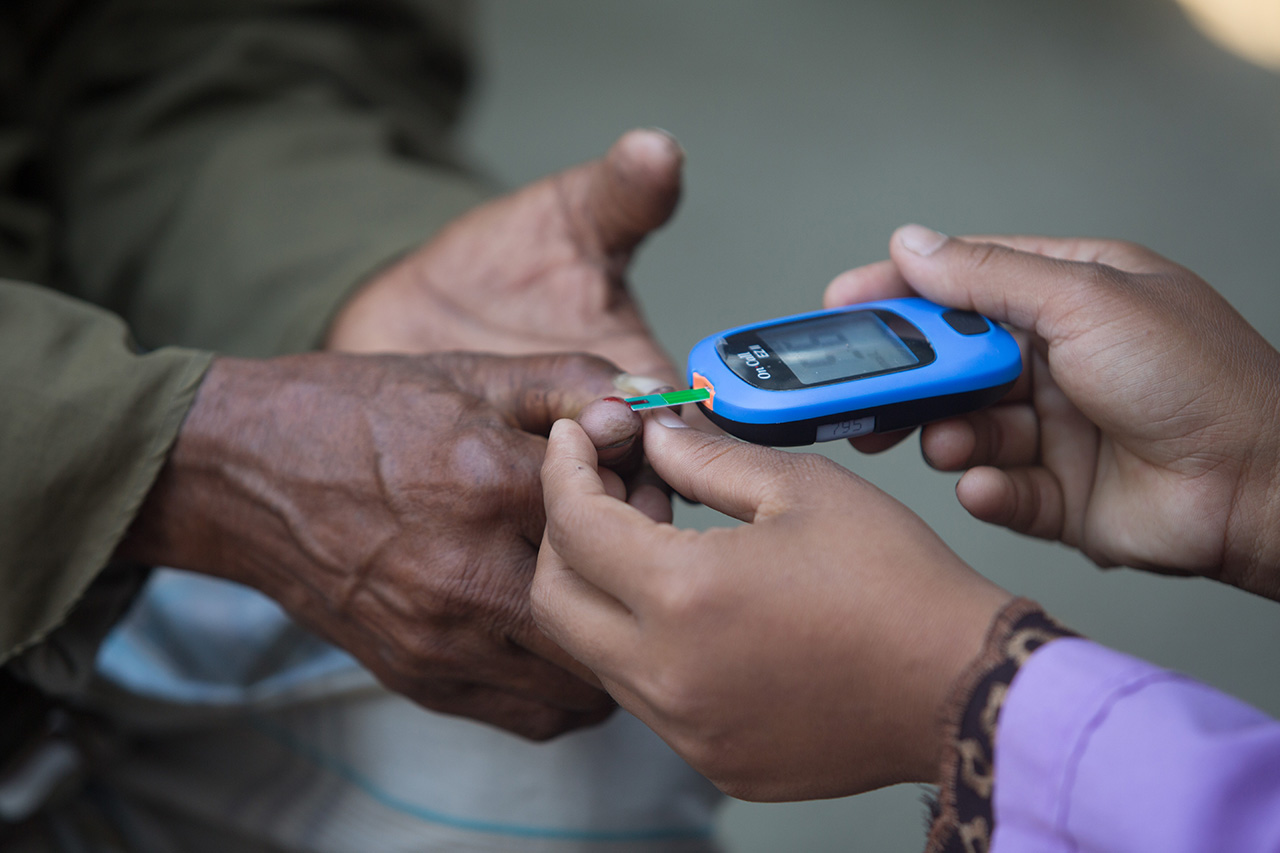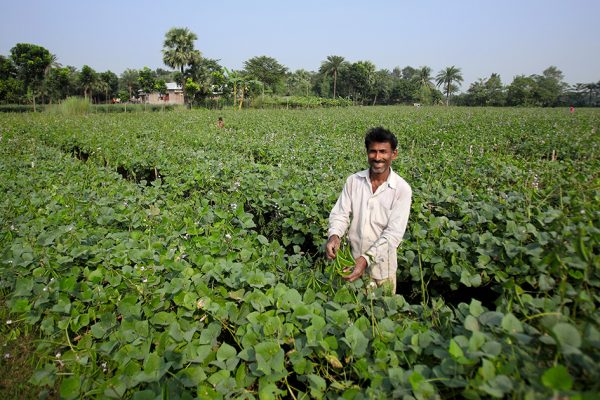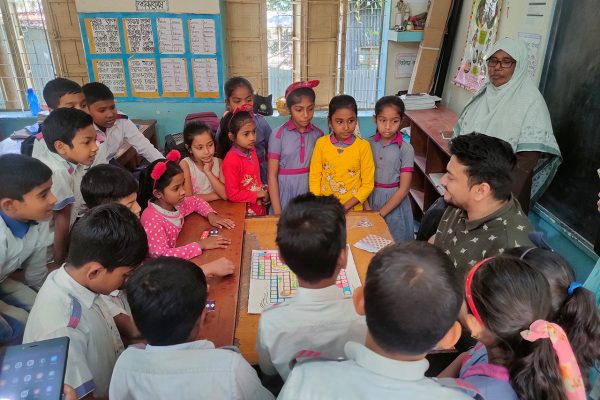Taking on tech: 3 stages that every NGO needs to know
Reading Time: 3 minutes
From managing mobile tablets for loan collections to responding to floods through Facebook’s disaster map, BRAC has delved into a technological shift from a long time ago. The question still remains: How can technology be further embedded into the ecosystem?
Two-year-old Ghislane Ihimbazwe was in pain for 48 hours before being taken to a district hospital in Rwanda.
It was too late by the time she arrived.
A blood transfusion was her last resort, but it would take a six-hour-long round trip for a blood donor to arrive.
Ghislane’s mother, having lost all hope, had already started to tell her family about the sad news.
Meanwhile, a lab technician’s phone flashed a message: two units of blood was on its way.
Soon the mechanic whir of a drone could be heard circling the hospital. It dropped a cardboard box attached to a parachute, with two bags of blood in it.
Ghislane’s blood transfusion was a success. She was feeling better in no time.
A drone had saved her life.
It had come from Zipline – a drone delivery startup for blood and medicines.
Technology has become an integral part of our lives, but there exists more spaces where we need deeper integration.
From managing mobile tablets for loan collections to responding to floods through Facebook’s disaster map, BRAC has delved into a technological shift from a long time ago. The question still remains: How can technology be embedded into the ecosystem even more?

Digitising loan repayment systems for better client services
It has become increasingly crucial for development organisations to digitalise their processes – especially for those with a humanitarian agenda and a massive collection of information and data points.
BRAC has been constantly brainstorming on which trends to follow to integrate ICT within its programmes and processes. Should it be AI or machine learning?
“How do we break 47 years of practices with newer ones that make us more tech-savvy?” – we asked ourselves at BRAC’s first tech talk.
According to one of the panelists, Mridul Chowdhury, CEO and founder of mPower Social Enterprises, what will eventually work and the processing system selected should come from a practical understanding and the specific needs of the programme.
“Practice can be restructured, being mindful of emotional intelligence,” he added, “there are three stages an organisation goes through while uptaking and adapting to new technology.” These stages run simultaneously in an organisation and all the programmes will go through these three stages.
Stage 1: Automated reporting
Automated reporting helps to streamline workflow by standardising information and alerts.
As an illustration, let’s take the case of the BRAC’s humanitarian crisis management programme (HCMP). HCMP operates in one of the largest refugee camps in the world situated in Cox’s Bazar, Bangladesh. Providing services to almost a million Rohingya refugees, it requires tracking its workflow for fast and agile response in a complex emergency situation.
Stage 2: Decision-making capacity
The process of decision-making goes through various phases of intelligence, design, choice, and implementation. Our health, nutrition, and population programme (HNPP) is at this stage. The department in 2018 alone served more than 2 million people in Bangladesh through its various medical and consultancy services. HNPP has massive data points from a diverse group of stakeholders.

Integrating tech devices to collect data from grassroots level
It uses this raw data from the field to constantly upgrade its services. As it deals with health and medical services, it often has to make both structured and unstructured decisions to keep up to date, and decide what’s new, financially viable services to launch. To keep the decisions aligned with its annual operating plan, HNPP can use group decision support system (GDSS), geographic information system (GIS), and artificial intelligence (AI).
Stage 3: Decentralisation of decision-making
Decentralisation minimises hierarchical management for more targeted interventions. BRAC’s ultra-poor graduation programme (UPG) serves 12.9% of Bangladesh’s population who live below the poverty line. In 2018, 43,682 households graduated out of ultra-poverty through the programme – its interventions dynamic and customised from one household to the other.
Previously, this required time-consuming consultations with higher management without data-backed evidence to decide which cohort will receive what kind of intervention – be it microfinance loans, skills training, or some other kind of support. Now, decisions can be machine-generated by the input of data from the field for more efficient targeted intervention.
Incorporation of technology will also help BRAC identify which of its potential to leverage for partnerships and collaborations.
Tech-based initiatives often struggle to implement their ideas because they miss learning and insights from practitioners. One of BRAC’s biggest strengths has always been the insights from the field. We can leverage on it when partnering with academic entities and tech start-ups. This complementary strength would serve our purpose of embracing technology in broader scale.
At the same time, having a specific tech innovation fund signals a significant mindset change within the organisation. Setting priority funding accelerates those changes. Let it be an integral part of our quest towards building a world that works for all of us.
Jannatul Tazreen is an intern at BRAC Social Innovation Lab; Zarif Enam is an assistant manager for innovation ecosystem and partnerships at BRAC Social Innovation Lab; Nishat Tasnim is a research and insights specialist at BRAC Social Innovation Lab.





